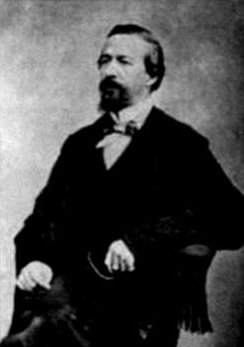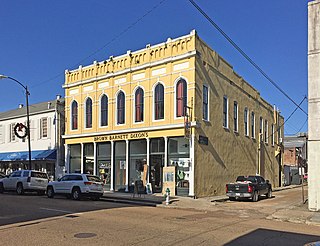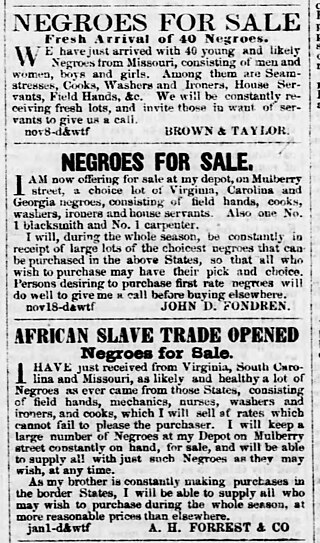
Jackson is the capital of and the most populous city in the U.S. state of Mississippi. Along with Raymond, Jackson is one of two county seats for Hinds County. The city had a population of 153,701 at the 2020 census, a significant decline from 173,514, or 11.42%, since the 2010 census, representing the largest decline in population during the decade of any major U.S. city. Jackson is the anchor for the Jackson metropolitan statistical area, the largest metropolitan area located entirely in the state and the tenth-largest urban area in the Deep South. With a 2020 population of nearly 600,000, metropolitan Jackson is home to over one-fifth of Mississippi's population. The city sits on the Pearl River and is located in the greater Jackson Prairie region of Mississippi. Jackson is the only city in Mississippi with a population exceeding 100,000 people.

Raymond is a city in Hinds County, Mississippi, United States. As of the 2010 census, the city population was 1,933; in 2020, its population was 1,960. Raymond is one of two county seats of Hinds County and is the home of the main campus of Hinds Community College. Raymond is part of the Jackson metropolitan statistical area.

The Vicksburg campaign was a series of maneuvers and battles in the Western Theater of the American Civil War directed against Vicksburg, Mississippi, a fortress city that dominated the last Confederate-controlled section of the Mississippi River. The Union Army of the Tennessee under Major General Ulysses S. Grant gained control of the river by capturing this stronghold and defeating Lieutenant General John C. Pemberton's forces stationed there.

The American Civil War was the most widely covered conflict of the 19th century. The images would provide posterity with a comprehensive visual record of the war and its leading figures, and make a powerful impression on the populace. Something not generally known by the public is the fact that roughly 70% of the war's documentary photography was captured by the twin lenses of a stereo camera. The American Civil War was the first war in history whose intimate reality would be brought home to the public, not only in newspaper depictions, album cards and cartes-de-visite, but in a popular new 3D format called a "stereograph," "stereocard" or "stereoview." Millions of these cards were produced and purchased by a public eager to experience the nature of warfare in a whole new way.
WDBD is a television station in Jackson, Mississippi, United States, affiliated with the Fox network. It is owned by American Spirit Media, which maintains a shared services agreement (SSA) with Gray Television, owner of NBC affiliate WLBT, for the provision of certain services; it is also sister to Vicksburg-licensed MyNetworkTV outlet WLOO. Although technically owned by Tougaloo College, WLOO is actually controlled by American Spirit through a separate joint sales agreement (JSA), with Gray providing limited engineering support. The stations share studios on South Jefferson Street in downtown Jackson, while WDBD's transmitter is located on Thigpen Road southeast of Raymond, Mississippi.

The Diocese of Jackson is a Latin Church diocese in Mississippi in the United States. Its ecclesiastical jurisdiction includes the northern and central parts of the state, an area of 97,458 square kilometers (37,629 sq mi). It is the largest diocese, by area, east of the Mississippi River.

The Battle of Raymond was fought on May 12, 1863, near Raymond, Mississippi, during the Vicksburg campaign of the American Civil War. Initial Union attempts to capture the strategically important Mississippi River city of Vicksburg failed. Beginning in late April 1863, Union Major General Ulysses S. Grant led another try. After crossing the river into Mississippi and winning the Battle of Port Gibson, Grant began moving east, intending to turn back west and attack Vicksburg. A portion of Grant's army consisting of Major General James B. McPherson's 10,000 to 12,000-man XVII Corps moved northeast towards Raymond. The Confederate commander of Vicksburg, Lieutenant General John C. Pemberton, ordered Brigadier General John Gregg and his 3,000 to 4,000-strong brigade from Jackson to Raymond.

William Wirt Adams (1819–1888) was a banker, planter, state legislator, and a Brigadier General in the Confederate States Army.
The Jackson expedition, preceding and related to the siege of Jackson immediately followed the Confederate surrender of Vicksburg, Mississippi on July 4, 1863 to Union Army Major General Ulysses S. Grant commanding the Union Army of the Tennessee. The Confederate Army of Mississippi at Vicksburg, under the command of Lieutenant General John C. Pemberton, had been isolated in the Vicksburg defenses by Grant's forces since May 18, 1863. The Confederates were under constant artillery bombardment, had to fight off a series of Union Army attacks and could not receive supplies of food and ammunition during the siege.
John F. Harris was an American lawyer and politician from Greenville, Mississippi. In the mid- and late-1880s he was a member of the Greenville city council and in 1890 he was elected to the Mississippi House of Representatives. He was also a member of numerous local civic organizations. He is noted for an 1890 speech given to the state house in support of an appropriations bill for a monument to Confederate veterans of the American Civil War.

Jones Stewart Hamilton was an American sheriff, state senator, businessman and Confederate veteran who became a millionaire through investments in railroads run by convicts he leased after the war. His mansion is the namesake of Belhaven University.
Raymond Birchett was an American architect. He designed commercial and school buildings in Mississippi, including several buildings on the campus of Mississippi Valley State University.
Henry Minor Faser was an American academic administrator, life insurance business executive and political activist. He was the founding dean of the University of Mississippi School of Pharmacy, the vice president of the Lamar Life Insurance Company, and a supporter of the States' Rights Democratic Party's 1948 presidential campaign.

The Norman Studio in photography refers to the family business run principally by photographers Henry C. Norman (1850—1913) and his son Earl Norman (1888—1951) in Natchez, Mississippi between 1876 and 1951, which produced around 75,000 images documenting many significant types of events and subjects in the various small towns along the lower Mississippi River. Its output remains one of the most valuable and comprehensive visual collections documenting Southern American life during the late nineteenth and early twentieth centuries.

Reuben Kendrick was a constable and state representative in Mississippi. He was born into slavery in Louisiana. He was appointed constable in Amite County, Mississippi in 1869 by Governor Adelbert Ames. He was elected to a seat in the Mississippi House of Representatives in 1871 and served from 1872 to 1875. He represented Amite County. He and other Mississippi state legislators were photographed in 1874 by E. von Seutter.

George Caldwell Granberry was a state legislator, postmaster, and teacher in Mississippi. He was a member of the Mississippi House of Representatives during the 1882 session, representing Hinds county. He was a member of the Committee on Propositions and Grievances, a standing committee. While he served in the Legislature, he was also a school teacher. In 1881, he was part of a fusion ticket along with Republican nominees for the Mississippi Legislature J. B. Greaves, Thomas Atkinson, and J. A. Shorter.

Eugene Bonaparte Welborne was a constable and state legislator in Mississippi. He represented Hinds County, Mississippi, from 1874 to 1875 in the Mississippi House of Representatives and lived in Clinton, Mississippi. He was a Republican.
Grey Flowers Ferris was an American lawyer, farmer, and politician who served two terms as a member of the Mississippi State Senate. He got his start by successfully running for student government president while an undergraduate at Tulane University and later attended the Tulane University Law School. Rising to chairman of the Senate's Education Committee, he ran for lieutenant governor in 1999 but lost in the Democratic primary to former state senator Amy Tuck. In 2009, Governor Haley Barbour signed a bill passed by the state legislature to name the Mississippi Board of Education's meeting room in Jackson after Ferris.

Aaron H. Forrest was one of the six Forrest brothers who engaged in the interregional slave trade in the United States prior to the American Civil War. He may have also owned or managed cotton plantations in Mississippi. He led a Confederate cavalry unit composed of volunteers from the Yazoo River region of Mississippi during the American Civil War. He died in 1864, apparently from illness.













